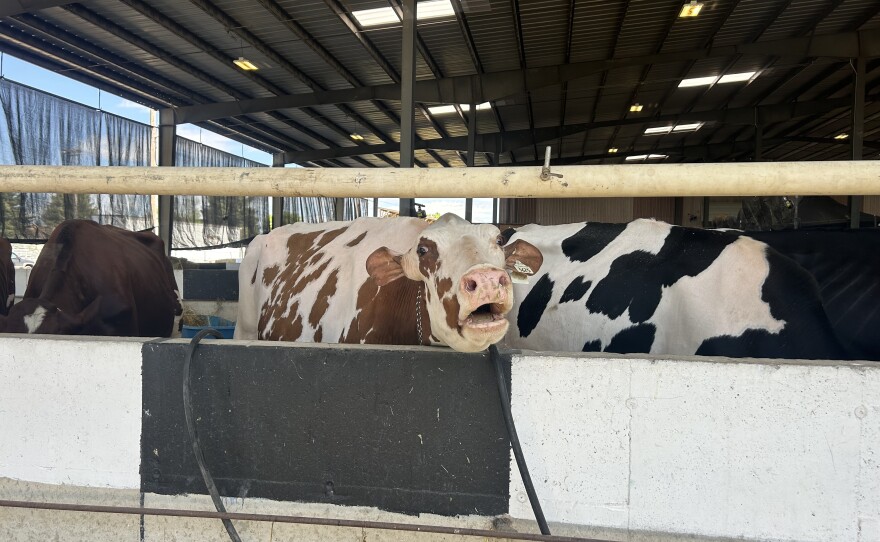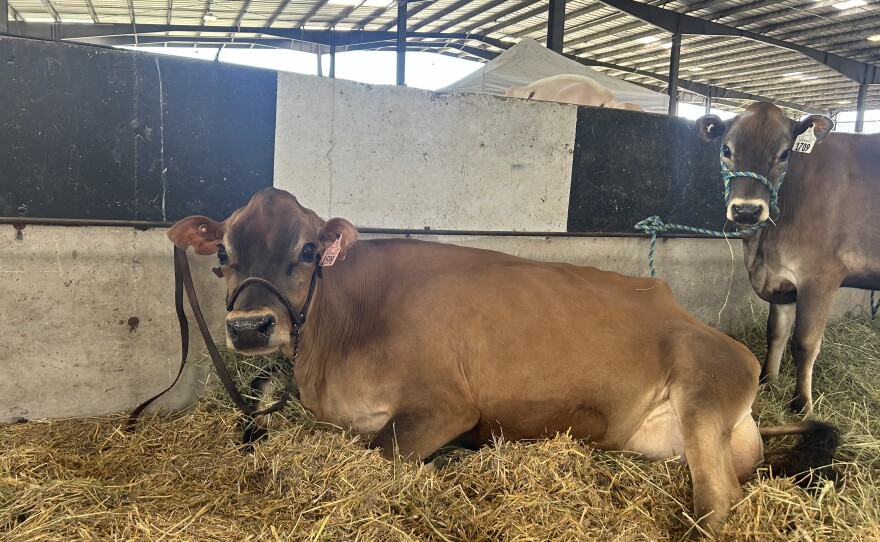As the Chairman of Richmond’s annual Black and White Days, Holstein cows have brought Craig Harris friends from across the United States.
Hundreds of dairy farmers, exhibitors, and their families — along with their cows — arrived in Cache County this week to take part in this traditional national show, where individuals from all over the country show their Holstein dairy cows. Individuals came from as far as British Columbia to Indiana to the event, which was started by Harris’ grandfather in 1912.
“We’ve been 109 years in consecutive,” Harris said. “It's the longest ongoing show that I know of in the world. It's amazing how long it's been going on.”
In 1909, Harris’ grandfather bought a registered Holstein cow from a dairy farm in Wisconsin. As he began breeding his cows and producing registered calves, he gained interest from other dairymen eager to show their cows.
"When they first started showing, they just had a guy on a horse and they had the heifers in a little pen, they didn’t even put halters on them or anything, and the guy would ride around on the horse and just point and say, ‘Okay, this one here’s the best calf,’” he said.
Now, the show follows a similar format but with a significantly larger turnout, more judges, and a refined venue.
“The backyard of my house was the first show ring,” Harris said. “We’ve been involved in it forever. My great grandpa, I am thankful for him.”
For many involved this year, it is a cherished family tradition. Lacey Papageorge, whose family has owned a dairy farm in Utah for 98 years, has been taking part in Black and White Days since childhood. She said she has been able to watch cows she knew as calves grow into adults.
“It’s really fun to get to watch them grow,” Papageorge said. “We show them as little heifers and then throughout their life and its really impressive to see them grow and be able to come out and show them every year.”
Her family has kept this tradition alive because of their love for the Holstein breed, she said. These cows, most recognized for their black and white markings, have above average milk production and can produce nearly nine gallons per day.
“We’re really passionate about our cows, and we love them,” Papageorge said. “We love just being with our cows.”
Youth from across the country also have the opportunity showcase their cows. Kinley and Kestin Martin, from Tulare, California, had the opportunity on Wednesday to display their cows and leave with first place ribbons. Fourteen-year-old Kestin said preparing for the show is no easy feat.
“We put in a lot of work towards it,” Kestin said. “We go and feed morning and night before school and after school. They’re all on certain rations and we just put a lot of work into it and walk them as many times as we can throughout the week.”
His 10-year-old sister, Kinley, said getting to work with the cows and meeting new people makes all the work worthwhile.
“If you ever want to try it, the hard work pays off,” Kinley said.
For Robyn Buttars, attending Black and White Days to watch her four grandchildren show their cows is an opportunity to bond with family and recognize the contributions of dairy farmers.
“Being on a dairy is a lot of work, and it's a very important thing to have good, fresh, clean milk for us to consume,” she said. “I’m really grateful for farmers because I find that they are amazing people who are willing to work hard and raise families who know how to work.”
Kent Buttars, the Vice Chairman of Black and White Days, said that only 40% of the usual cow attendance occurred this year due to recent outbreaks of avian influenza, a disease transmitted through dairy cattle. Despite this setback, Buttars managed to reconnect with old friends and cows during this year’s festivities. He encourages others to partake in the remaining events through Saturday.
“Come to Richmond, and enjoy the cow show,” he said. “And drink a lot of milk.”
The Black and White Days parade is scheduled for Saturday at 5 p.m., starting from 600 South State Street and concluding at the Park Community Center.






